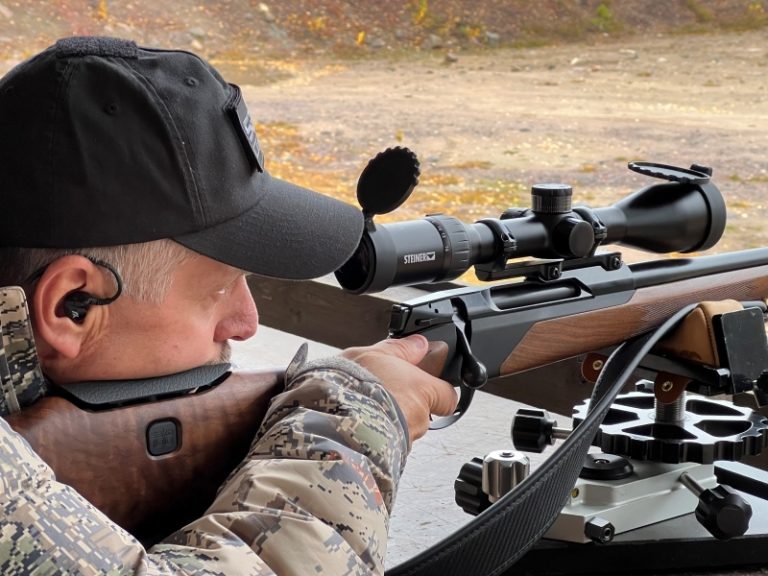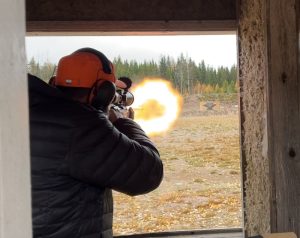
It had been a long time since I’d been required to take a test, and this one had me really nervous. The outcome would decide whether I’d be able to hunt the following day or not. I was in Finland, and we were testing out the new Sako 100 rifle and according to Finnish law, I was required to pass a shooting proficiency test to be able to hunt moose. I was using a rifle that I’d only laid hands on a few minutes earlier and the group of onlookers were comprised of some the top writers and editors from Australia, New Zealand and United States. A couple of them that had taken the test previously, offered me some advice. I was all ears and when the moose target presented itself, I shifted into automatic mode and fired the three rounds in rapid succession. We had 90 seconds to take the shots, but I did it in under 30. Everything just felt right. When the range officer radioed back with the one-word response, “pass,” I was ecstatic. I was going moose hunting in Finland with the new Sako 100 rifle!
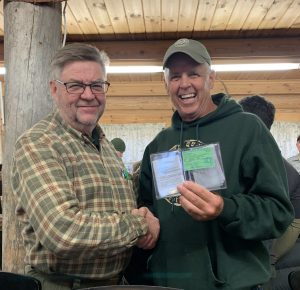
Purchase a Sako 100 Rifle at Guns.com
We’d been introduced to the Sako 100 rifle with a new, switch barrel, the evening before at a formal press reception. I’ve always had a fascination with rifles that have the ability to easily switch barrels and after handling this rifle for a bit, there was little doubt that Sako was going head-to-head with Blaser with this rifle. Offered in two versions, the Explorer Wood sports a walnut stock with Schnabel fore-end and a Monte Carlo comb on the rear stock. The look leaves little doubt this rifle was aimed at the European market. The Explorer Carbon, on the other hand, features a full 360-degree weaved carbon stock with the same Schnabel fore-end and a Monte Carlo comb on the rear stock. Both stocks have an adjustable cheek piece that is spring loaded for easy one-handed use while in the firing position. This ensures a perfect cheek weld in all shooting positions. Europeans favor this stock design for fast, off-hand shooting on driven hunts, and it is extremely popular in Africa as well, where most shots are taken from the standing position, off of shooting sticks. The carbon stock has a non-slip finish that is easily gripped when wet and is reported to be chemical resistant, a problem that seems to have plagued some Model 85 synthetic stocks. Chemicals like deet, found in mosquito repellent, would cause the stock’s finish to peel. Both stocks have an aluminum V-block bedding system that cradles the full length of the receiver.
Sako 100 – Easy to Change Barrels
The heart of the system, however, is the ability to simply change barrels. In this case, it’s just a matter of removing two screws. Sako even built the tool for barrel removal, with torque indicator, right into the stock. Uniform torque on the barrel is the key to repeatable accuracy with these switch barrel rifles. Depending on the cartridges you are switching between, if they don’t share a common bolt-face, then the bolt can be switched out as well. Bolts have a diamond-like coating to reduce friction and increase durability, and the barrel is Cerakoted. Each chambering has its own magazine as well, to ensure flawless feeding. Magazines are a steel double stack design, similar to those on the 85s, with a similar locking system. The scope remains affixed to the barrel, so a separate scope is required for each barrel. This allows barrels to be quickly switched and no need to re-zero. The Sako 100 comes in one action length and can accommodate cartridge lengths from 243Winchester up to 375 H&H.
Adjustable Trigger and Handspannung Safety
The trigger is fully adjustable from 1.5 to roughly 4 pounds and is graduated in six levels that audibly click when adjusted. The trigger can also be adjusted 3.5mm forward or reward for a total of 7mm adjustment, to accommodate for different hand sizes. The same tool used to remove the barrel is also used to adjust the trigger. The trigger pad is quite wide compared to most previous Sako models, and I found it extremely comfortable. The Sako S100 has a manual cocking or “Handspannung” safety that allows you to have the rifle uncocked until you’re ready to shoot. The bolt is locked closed when the safety is uncocked, but a bolt release button on the side of the bolt shroud allows the bolt to be opened so the chamber can be unloaded while rifle on safe. Even if the rifle is dropped, there is no way it can fire with this safety type.
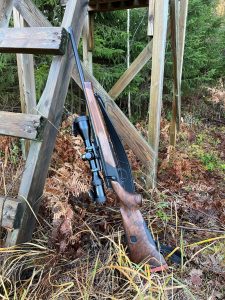
I was given an Explorer Wood, chambered in 308 Winchester, to use and my first impression was that it felt like a high-end European rifle, and in truth, it is. The wood on the stock was beautiful and the new, proprietary Sako action is very smooth. The trigger, like all Sakos, had no creep and I really liked the feel of the wider pad. I set the trigger on the rifle I was using at around 2.5 pounds, my preferred hunting weight. While we were unable to go downrange to retrieve targets due to the number of shooters and short time frame we had, through the spotting scope, I would estimate my groups at around 0.8 MOA off the bench. While the rifle felt good on the bench, when I shot the rifle from the standing position, there was no doubt that this is what it was designed for. For the European hunter on a stand or the hunter in Africa, this rifle really shines.
Additionally, I was able to shoot the Explorer Carbon, also chambered in 308 Winchester, and we dialed the trigger on it down to 1.5 pounds. While too light for hunting, it did tighten my groups slightly off the bench. I ran several rounds through an Explorer Wood chambered in 375 H&H as well. There is no published weight for this rifle but I’d say the Wood version is in the 8 pound range and the Carbon about a half pound lighter. So, recoil was obviously very manageable even in the 375 H&H. For the hunter going to Africa on a combination dangerous game/plains game hunt, the Sako S100 is perfect. It has barrels available in 243 Win, 308 Win, 6.5 CM, 6,5×55 SE, 270 Win, 30-06 Springfield, 8x57IS, 9.3×62, 300 Win Mag, 7 mm Rem Mag and 375 H&H.
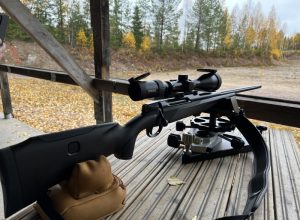
The handspannung safety does take a bit of getting used if you’ve never used one, which I hadn’t. A fair bit of thumb pressure is required to move it into the cocked or “ready to fire” position. De-cocking is done simply by depressing a small button but again, it took some getting used to and a bit of fiddling. The option of a more traditional firing pin safety will be available on future models. When I first started using the safety, I found it awkward but after running as few dozen rounds through the rifle, it became second nature. Considering the added security of the handspannung safety, I think I would opt for it, especially in situations like those that arise on an African dangerous game hunt, where you have numerous people in close proximity.

Hunting with the Sako 100 Rifle
I did get to hunt the following day and I was anxious to try out the Sako 100 on some live game. Stands were assigned via random draw, and we did three drives in the morning and two in the afternoon. Both white-tailed deer and moose were fair game and as luck would have it, nothing came by my stand on the first two drives and then on the third drive, after a volley of shots nearby, the hunt master announced over the radio that moose were now closed.

Of course, it was about two minutes later that a lone cow moose wandered by my stand. All I could do was watch and laugh at my misfortune. In the end I never fired a round on the hunt, but it was pretty amazing to take part in my first driven hunt and to be part of such a deep-rooted tradition.
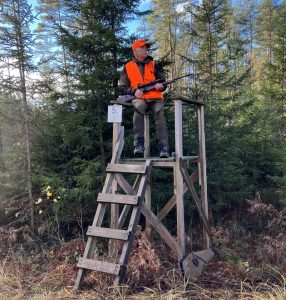
As for the Sako 100, no doubt the cost will dissuade many from looking at one and there’s a definitely culture of multiple gun ownership in North America. Many gun owners would rather own two or three rifles than owning one with interchangeable barrels. But for the traveling hunter or the hunter that just wants to be intimately familiar with one firearm, the Sako 100 definitely hits the mark and offers some serious competition for the Blaser.
Per our affiliate disclosure, we may earn revenue from the products available on this page. To learn more about how we test gear, click here.



